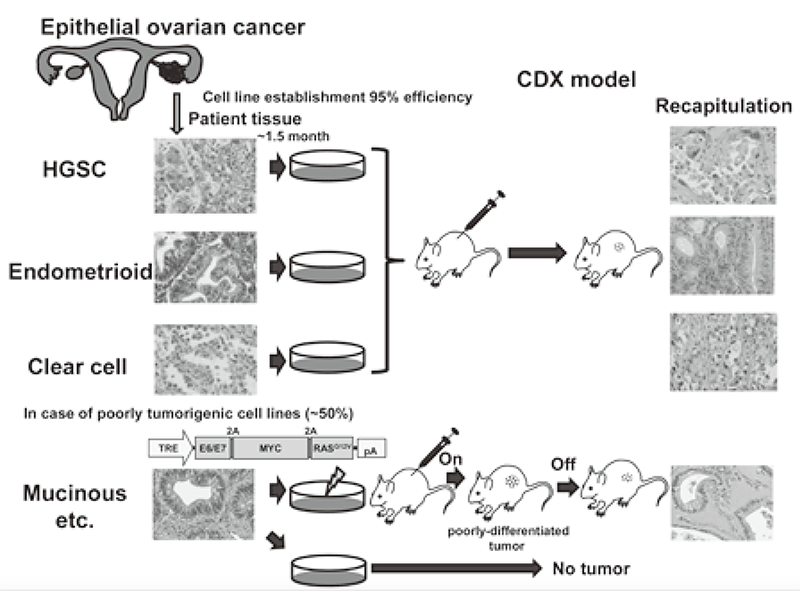Annual Report 2018
Department of Cell Culture Technology
Tohru Kiyono, Chiho Kohno
Introduction
There are mainly two approaches to amplify cancer cells from patients: in vitro cell culture and patient-derived xenograft (PDX). Patient-derived xenografts (PDXs) generated from fresh tumor specimens generally reflect histopathology, tumor behavior, and the metastatic properties of the original tumor. However, PDX is generally costly and the success rate to establish new PDX lines is not satisfactory.
The Team and What We Do
The Department was founded in 2014 for developing better methods to amplify normal human cells as well as cancer cells derived from clinical specimens obtained by operation, biopsy and therapy. With the help of the pathology division, we have started to store valuable cancer specimens systematically so that cancer tissues or cancer cells can be cultivated in vitro in the future.
Research activities
Based on the improved method developed by the Division of Carcinogenesis and Cancer Prevention, we can now cultivate so far difficultto-cultivate primary human cells, such as hepatocytes, digestive tract epithelial cells, endometrial cells and oviduct epithelial cells. A method for a long-term culture of these cell types has been established, and also can be immortalized by transduction of CDK4, cyclin D1 and TERT so as to be cultivated in more general culture conditions. The method and the immortalized cells have been provided to researchers in the Center as well as academic institutes.
We have banked 12 new ovarian cancer specimens and reached over 90 in a deep freezer. Among them, we have established 22 ovarian cancer cell lines. Cell line-derived xenografts (CDX) were confirmed to faithfully recapitulate the features of original tumors. Some of the lines were not tumorigenic in nude mice, but conditional expression of additional oncogenes made them tumorigenic and the resultant tumor tissues after termination of the oncogene expression were confirmed to faithfully recapitulate the features of original tumors. These results were published. Thus, we now are able to make xenograft tumors faithfully recapitulate the features of a given ovarian tumor.

Future prospects
Cancer cell lines established by ordinary culture methods generally do not maintain the features of original tumors. Additional mutations in p15/p16 genes and pathological features of xenograft tumors are often different from the original tumors. We have established a new culture method to amplify ovarian cancer cells at almost 100% efficiency. Xenograft tumors faithfully recapitulated the features of original tumors. Based on the improved culture methods of normal human epithelial cells, now we are trying to establish cell lines from precancerous lesions, such as endometriosis and cervical dysplasia. These cell lines are valuable resources with detailed clinical information. Systematic storage of live materials from valuable clinical samples is now under development.
